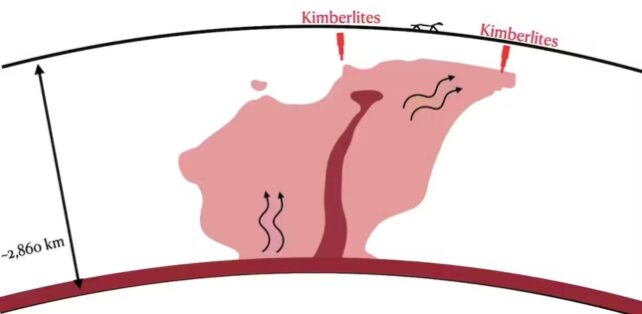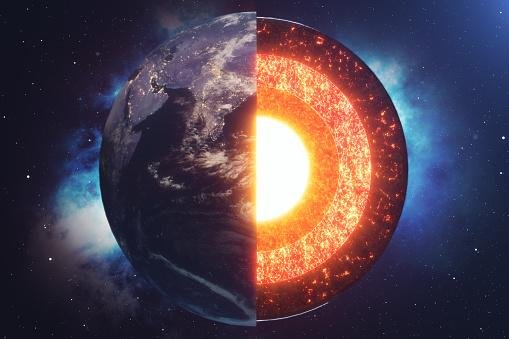In a study published in the scientific journal Nature Geoscience in early May (2023), researchers from the University of Wollongong, Australia, Explain how diamonds form in magma deep within the Earth. Diamonds are brought to the surface through kimberlite rock during volcanic eruptions.
In the 1970s, scientists had already argued that volcanic smog might have originated between the Earth’s mantle and its core. A volcanic plume is a column of ash emitted during the explosive eruption of a volcano.. A 1980 study revealed that kimberlite may be linked to plumes in the Earth’s mantle. In 2010, researchers stated that kimberlite eruptions could be explained by plumes, but they explained that they were uplifted by two deep and hot bubbles in Africa and the Pacific Ocean.
As the authors of the new study explain, they already knew that these bubbles were mobile, but they didn’t know how activity in the Earth’s mantle triggered kimberlite eruptions.. More specifically, they did not know how heat was transported from the depths of the Earth to the kimberlites.
During the study, the scientists found that Most diamonds are formed in magma below the earth’s crust and are brought to the surface through pillars of heat that cause volcanic eruptions of kimberlites.. The eruptions thus form deep ‘pipes’ that carry the diamonds out; In fact, hundreds of such eruptions have occurred in the last 200 million years, mostly in Canada (178 eruptions), South Africa (158), Angola (71), and Brazil (70).
kimberlites and diamonds
Geologists have used supercomputers to create three-dimensional geodynamic models of the Earth’s mantle. So they were able to make a representation of the movements of the continents and the mantle over the last billion years.
In this way, the researchers discovered that a phenomenon called ‘heat pillars’ connects the Earth’s depths to the surface. These pillars heat the kimberlites and cause volcanic eruptions, bringing the diamonds to the outer part of our planet.

“We calculated the upward movements of heat from the core and found that large mantle uplifts, or ‘heat pillars’, connect the very deep Earth to the surface. “Our modeling shows that these pillars provide heat beneath the kimberlites, and that over the last 200 million years,” the researchers said in an official press release from the University of Wollongong. “Most of them show that it explains the kimberlite eruption,” he said.
The scientists also explain that the plumes rose much faster and carried dense materials across the Earth’s mantle, so this could explain the differences in chemical elements found in kimberlites from different continents.
Source: Tec Mundo
I’m Blaine Morgan, an experienced journalist and writer with over 8 years of experience in the tech industry. My expertise lies in writing about technology news and trends, covering everything from cutting-edge gadgets to emerging software developments. I’ve written for several leading publications including Gadget Onus where I am an author.













